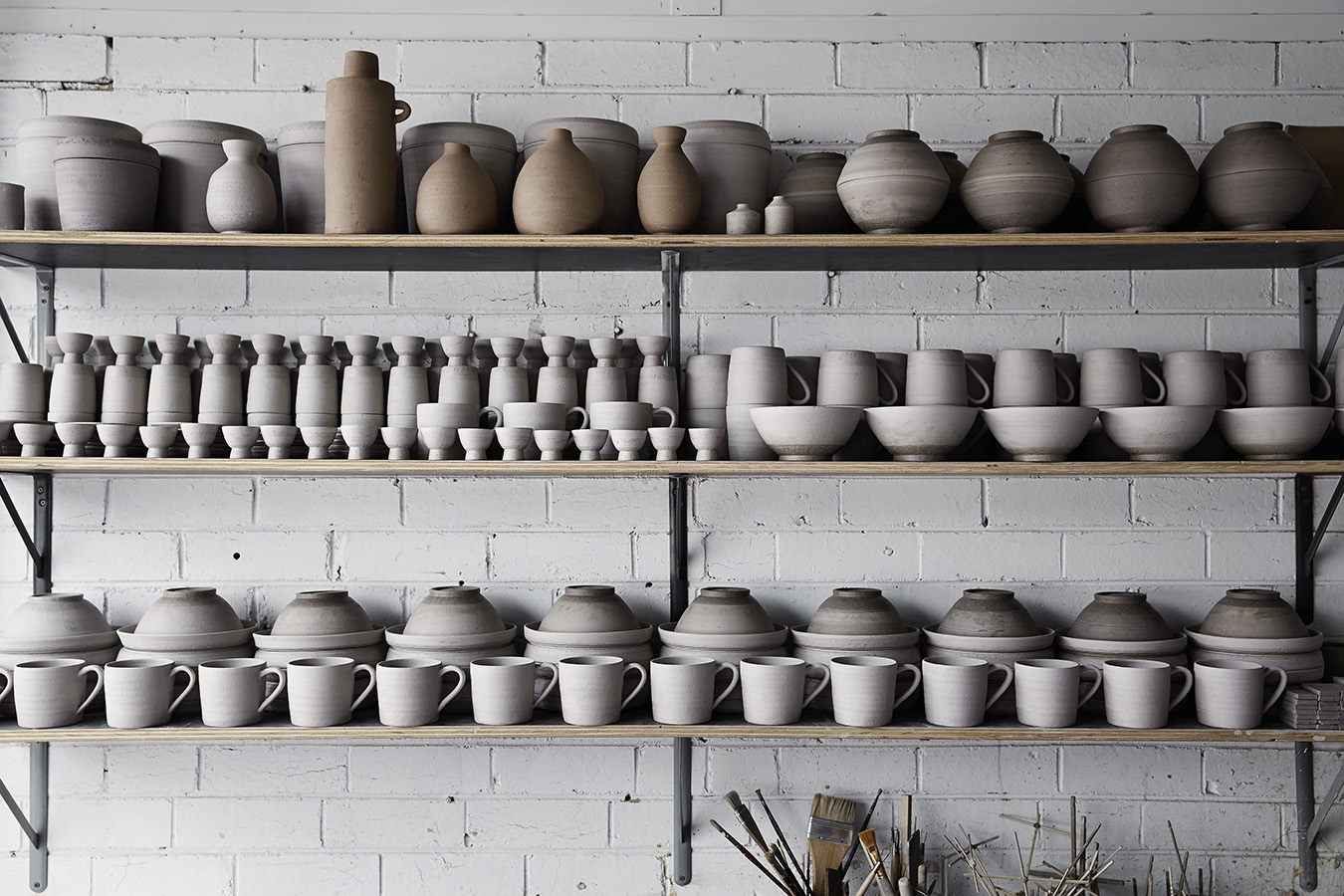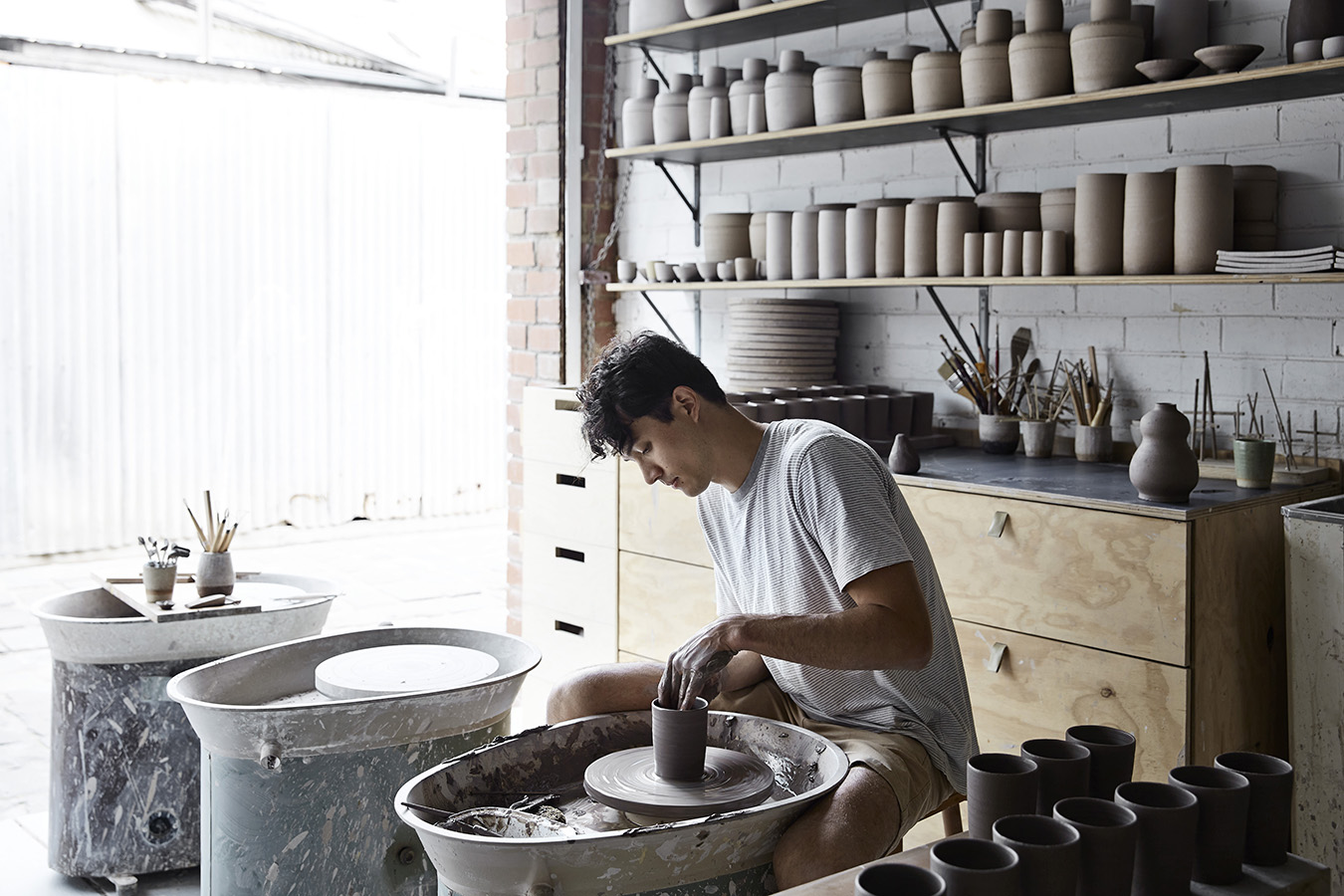
Meet the Maker: Wingnut & Co.
Potters Asuka Mew and Anna Miller-Yeaman began their ceramics label Wingnut & Co. three years ago. Working from their studio in North Melbourne, the pair produce ceramics that have an innate tactile and artistic quality, and strive to recycle materials to reduce their environmental footprint.
Asuka and Anna design products to be used every day – tableware, vases and planters. Each item is as much a visual art piece as it is functional in purpose, with natural materials that are highlighted with simple patterns, glazes, brushwork and textures core to their aesthetic. “We admire considered and practical design, and try to reflect these qualities in our own work,” says Anna. “We spend quite a bit of our spare time in museums, and are influenced by any pot that was created out of necessity that caused people to better their lives. We both tend to gravitate towards humble aesthetics of utilitarian ceramic artefacts. We’re also fascinated with how a piece of pottery shard can reveal so much information about how people lived and their food culture throughout history.”
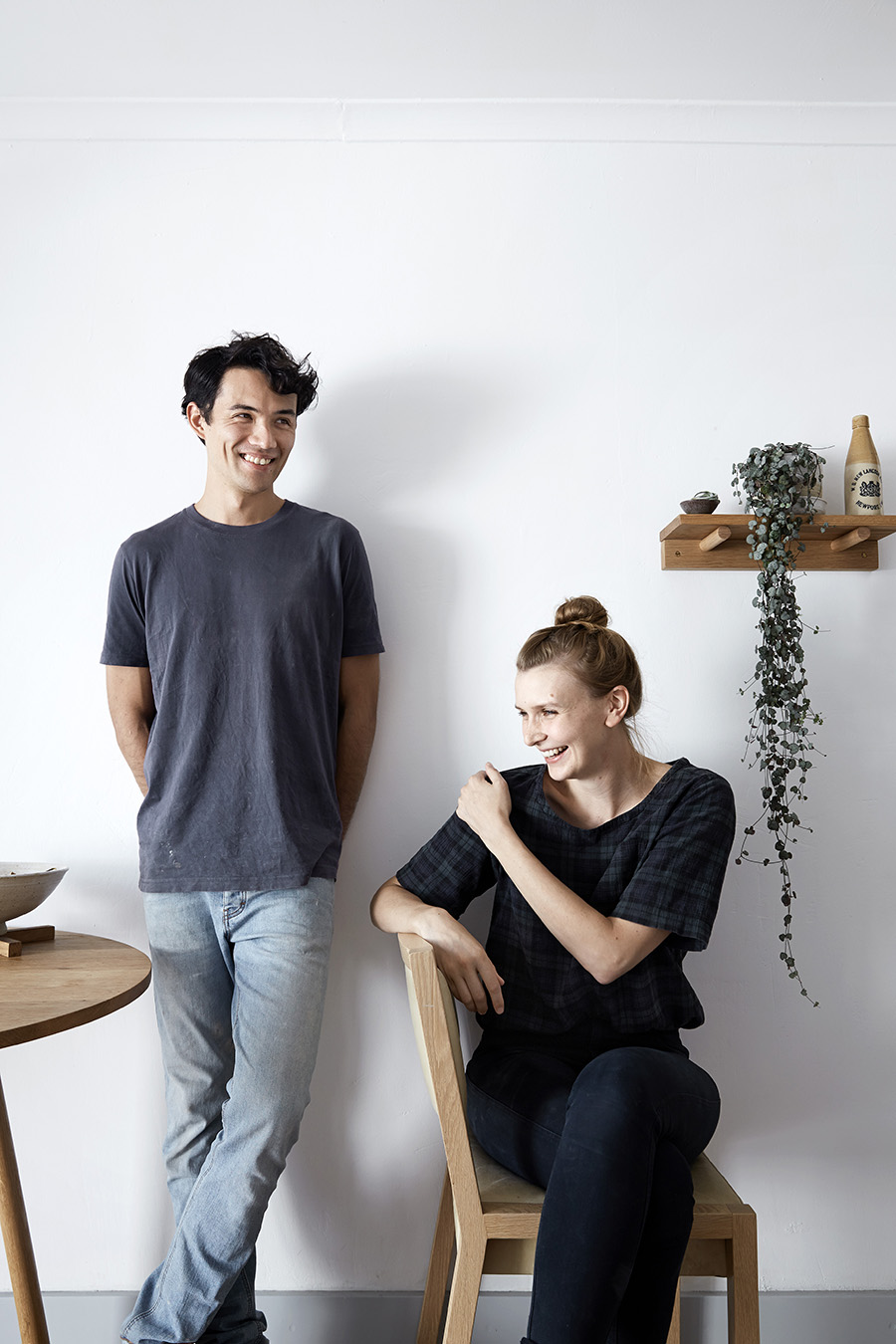
The couple studied at the Victorian College of the Arts – Asuka painting and Anna ceramics – and since graduating in 2010, they’ve undertaken various creative pursuits, from furniture making to picture framing. With their vast skill set they started to entertain the idea of creating their own business towards the end of 2012, when Asuka attended a short course in wheel-based ceramics at the Carlton Arts Centre. From that moment a fire was ignited, and his passion for ceramics grew.
“Making with clay quickly became an obsession for Asuka and at any spare moment – before work, after work, on the weekend – he would be in the shed, on the pottery wheel,” shares Anna. “Asuka’s focus on pottery was unwavering and so it was only natural that ceramics became central to our first range we launched as Wingnut & Co. in 2013.” Today, the duo have a number of Australian and international stockists, and last year they opened a small showroom at the front of their studio space in North Melbourne. They hope that this interaction and glimpse into their making process promotes a greater appreciation of everyday items.
The majority of Wingnut & Co. pieces are individually thrown by Asuka on the potter’s wheel, and they also hand-build some items using slab and pinch pot techniques. Anna and Asuka use a range of Australian commercial clays to craft their vessels, and also dig and process their own clay from country Victoria and construction sites around Melbourne. They recycle their excess clay and reuse their materials wherever possible. “When a wheel-thrown piece is leather-hard, excess clay is trimmed away to finalise the shape of the piece,” explains Anna. “We collect and blend any excess trimmings and recycle them.”
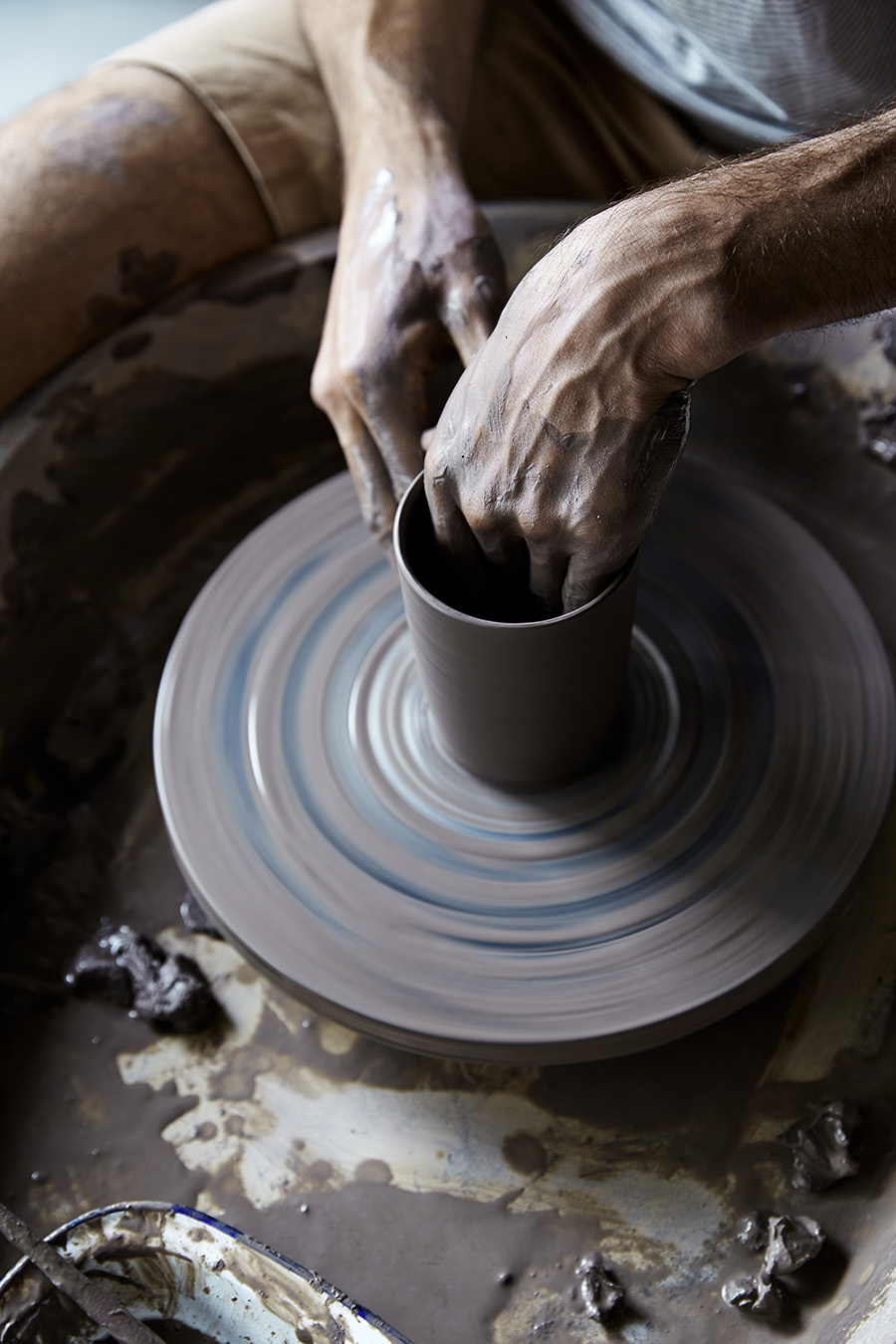
The pair are committed to utilising reclaimed timber and recycling materials in order to produce products that are sustainable, and are constantly looking for new ways to reduce waste. “We are very aware that we are using finite materials, so we try our best not to waste anything,” says Anna. “We examine each piece carefully before it goes into the kiln. At this point, pots can still be reverted back into wet clay. Of course, there will always be mishaps, but we try to minimise these as much as possible by being very selective at the firing stage.”
We continually reassess how we can better our practice and minimise our ecological footprint
Once pieces are bone dry, Anna and Asuka bisque fire them to 1000 degrees, after which they are glazed and fired to stoneware temperature at 1280 degrees. “During the design process we will size certain pieces to stack within and around each other when firing,” explains Anna. “We pack the kiln as economically as possible as not to waste any energy. We continually reassess how we can better our practice and minimise our ecological footprint.” Pieces that have additional timber elements have their lids individually turned after the ceramic component has been fired. “All timber elements in our designs are made from timber off-cuts donated from other creative Australian businesses,” says Anna. “Any timber waste made in our studio is burnt down and the ashes are used in our glaze recipes.”
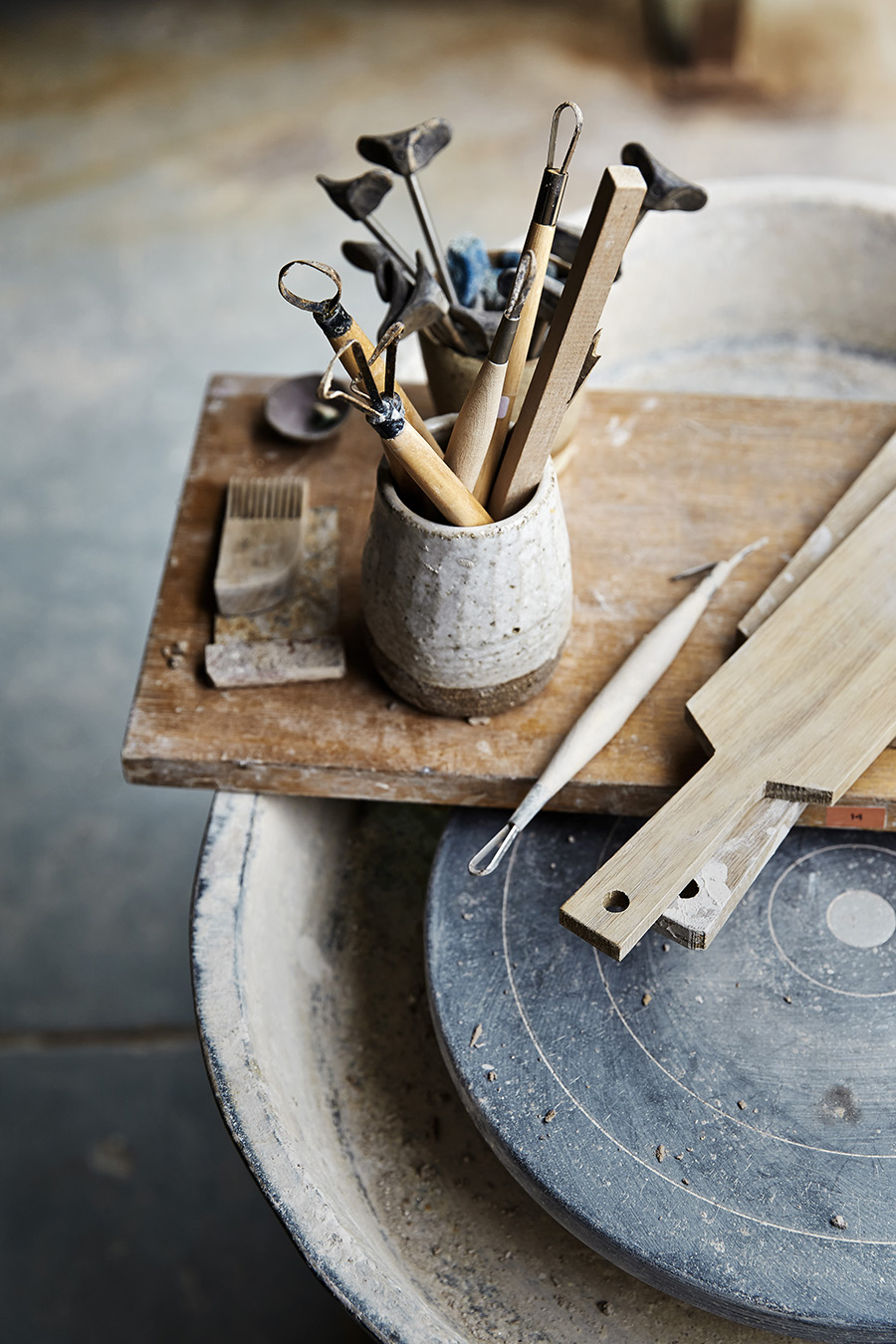
Many of Asuka and Anna’s ceramic glazes and techniques are influenced by Asuka’s Japanese heritage, as well as nature’s rhythms. “The seasons greatly influence our designs and the tones of our glazes,” explains Anna. “We make all our own glazes and Asuka is constantly experimenting with new recipes. We dip-glaze most of our pieces but some will have hand-painted elements or brushwork using porcelain slip.”
Finding a balance between aesthetics and practicality that satisfies both their expectations is something Anna and Asuka strive for when conceiving a new range. “We will dissect and adjust a design until it feels resolved,” explains Anna. “We continually influence and challenge each other on what we like and why, and we both have particular opinions on what makes a refined, high-quality product. We hope the unifying element across all our pieces is that they will still be relevant and practical for years to come.”
—————————————

